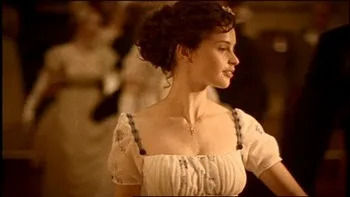New decade, new Emma
- Brett Harris
- Mar 11, 2020
- 3 min read
Updated: Aug 29, 2020
The novel’s newest adaptation demands our attention
Autumn de Wilde’s reimagining of Jane Austen’s “Emma” dresses the tale in riotous colors, fast-paced witticisms and endearing characters.
Unfurling among the crowded plantings of a hothouse, the opening scene of Autumn de Wilde’s “Emma” offers us an inauspicious first glance at the title character (played by Anya Taylor-Joy). Selecting flowers for snipping, she snipes at the maid, “Not that one! The next”— an irrational imperative that all but assures the audience that they are dealing with a capricious and cold-hearted character. However, while such an assumption is certainly supported by various elements of the film, de Wilde’s reimagining pushes back against the unlikable Emma in subtle (and stunning) ways.
Getting it out of the way early, the set and costuming are out of this world. Vibrant colors stream along the screen in an endless parade of pastels. Taylor-Joy is certainly dressed to impress, though the glimpses we receive of her surroundings — manicured mansions and regal landscapes — nearly rival her own magnetism. Likewise, Mr. Knightley’s (Johnny Flynn) own opening scene is a display of luxury reminiscent of John Malkovich’s “Dangerous Liaisons.”
As if having captured the audience’s attention with aesthetics weren’t enough, de Wilde’s camera is practically glued to Taylor-Joy, and with good reason. Slipping and swirling along the currents of Emma’s gravity, the shifting camera angles and the sudden cuts make it seem as though the space Emma inhabits comes into existence only as she moves and creates it. However, the camera is not so shortsighted (and nor should the audience be) in its adoration of the main character: Filtering through the unfocused background (a limbo for a good number of supporting characters), the audience catches aborted gestures, emotive facial expressions and snippets of dialogue that all belie the controlled surface Taylor-Joy presents. Indeed, each scene is a marvel on first glance, and a mystery on the second — a change that demands a careful examination.

Likewise, the actors deliver delightfully nuanced performances — Bill Nighy is quite believable as a paranoid and caring Mr. Woodhouse, but his apparent control over his (and possibly our) own surroundings raise questions over his projected helplessness. Similarly, Taylor-Joy’s performance, along with those of Mia Goth (as Harriet Smith) and Flynn, prompt frequent re-evaluation of the title character’s motivations. Tear-stained cheeks in an early scene suggest a woefully lonely young woman, and an impassioned rebuttal to Mr. Elton (Josh O’Connor) rebels against a simple interpretation, suggesting pride on one side, and a fierce hatred for women’s dependency on the class -status of their suitors on the other.
Furthermore, de Wilde’s adaptation of the Box Hill scene lends a hand to those of us who hope for a relatable Emma. The framing of Miss Bates’s (Miranda Hart) embarrassment and Emma’s importunate bodily response to Mr. Knightley’s inquiry confound attempts to view Emma as a stone-cold villain, but rather indicate the struggles of a young woman learning to balance quantity of companionship with quality. Certainly, this “Emma” is a visual treat. Yet, at the risk of sounding cliche, this incarnation invites us to look beyond the cover of the book, and to get to know the thoughtful, flawed and enthralling person behind the persona.
Do you have strong feelings about “Emma”? The North Carolina chapter of the Jane Austen Society of North America is hosting a video discussion of Autumn de Wilde’s adaptation of “Emma” on March 22 at 2 p.m. Eastern Time, led by JASP co-director Dr. Inger Brodey.
RSVP to jasna.ncarolina@gmail.com.








Comments